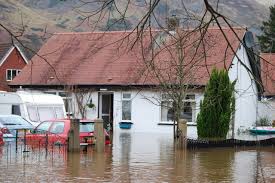Sussex County Homeowners Insurance: Understanding Flood Hazard Mapping 
In aftermath of Hurricane Katrina, efforts to reduce losses to personal property resulted in the Flood Insurance Reform Act of 2004 overhaul of the previously established National Flood Insurance Program. The revisions essentially ousted homeowners who live in high risk areas or who have filed more than two flood related property claims from federal insurance coverage plans. Recent studies indicate that the 2004 revisions causing landowners to pay exponential escalations of flood insurance premiums, with rates rising up to ten-times the previous amounts. This March, however the Obama administration passed new reform efforts limiting the annual insurance rate increases. The new Homeowner Flood Insurance Affordability Act of 2014 will lower the recent rate increases on some policies, prevent future rate increases, and also repeals certain rate increases that have already gone into effect.
Recent revisions to the Federal Emergency Management Agency (FEMA) flood hazard maps have caused quite a stir among homeowners in highly affected areas such as New Jersey, where more homeowners found their properties listed in higher risk areas. As a result, homeowners have been more exposed than ever to high insurance rates and even loss of coverage. While homeowners can challenge the classification of their home’s risk level, many property owners do not fully understand how those risks are calculated. Furthermore, they are unaware of how their flood insurance rates often directly reflect the uncertainty of flood risk.
FEMA defines flood risk into three basic categories.
- High Risk: The high risk areas of a flood map indicate specific flood hazard areas. Assessments have indicated that these areas face a 1 in 4 chance of flooding over a thirty year period. In these areas, all property owners are required to have flood insurance according to federal mandates.
- Moderate-to-Low: This is the largest category and account for over 20 percent of all flood claims submitted. These areas face non-specific flood risks and hazards. While flood insurance is not mandatory in these areas it is still highly advised, especially in areas which receive high precipitation and snowfall.
- Undetermined Risk. Undetermined risk areas are essentially data gaps where no reliable information has been acquired and therefore no recommendations can be made.
At Provident Protection Plus Insurance Agency, we believe that knowledge is the key to making good decisions. That is why we work diligently with our clients to fully address all their risk exposures and Sussex County Homeowners Insurance coverage needs. Our New Jersey Property Insurance policies can be expanded to cover all your personal assets. We offer both standard New Jersey Flood Insurance and Sussex County Excess Flood Insurance policies to ensure that your property is secure no matter what risk level you face. Contact us today at (888) 990-0526 for more information about any of our policies and see how our expertise can protect you.



